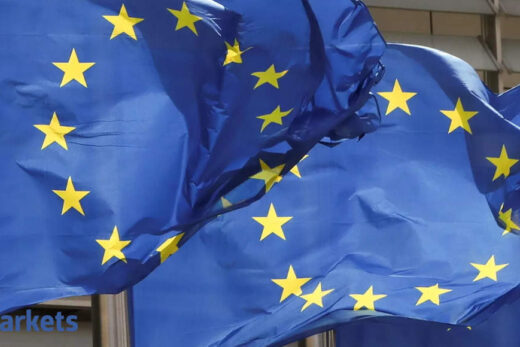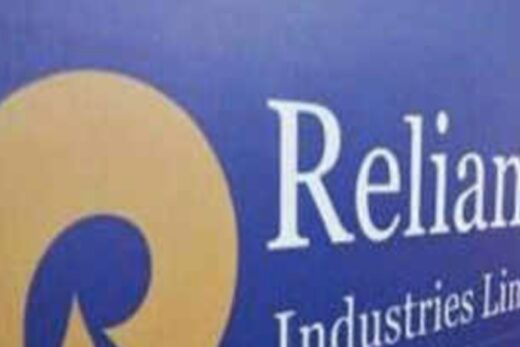Edited excerpts:
In its last policy statement, the RBI projected India’s GDP growth for FY22 at 9.5%, taking into account a balance of risks and upsides. However, with the possibility of a third Covid wave looming large, do you think economic growth will meet the central bank’s expectations?
To start with, we have forecast a growth of 9.2%. This forecast takes into account the hit to growth from the second wave of the pandemic. As for a third wave, it is very difficult to predict its occurrence, let alone its timing or intensity. Therefore, it is simply too difficult for the RBI or anyone else to incorporate it into a forecast.
But let’s just take the second wave as a guide. While the wave itself was severe, the recovery has been quite satisfactory and it has been fairly swift. We have seen a fairly rapid improvement in various mobility indicators such as electricity generation, e-way bills etc. So broadly it does seem that firstly, businesses are adapting to these kinds of shocks and secondly the effects have until now, been fairly short-lived.
At the same time, a key risk is that the immunity of the economy to multiple shocks of the pandemic will erode over time for a few reasons. Firstly, net financial savings of households have normalized. Recall that in the first wave, these savings had jumped to over 20% of GDP and the pent-up demand that was released upon reopening was tremendous. This is less likely now.
The second is that with public debt at close to 90% of GDP, fiscal headroom to deal with another wave is now further compromised. And then there is not a whole lot that additional monetary accommodation can achieve. Interest rates are already steeply negative, liquidity enhancements and sector specific lending programmes are already in place and yet, bank lending has been timid.
So on balance, there are too many unknowns making it difficult to quantify the impact of a potential third wave.
On the growth-inflation front, RBI is faced with a tricky situation. While inflation may moderate below the highs seen in May and June, the supply-side issues persist. Realistically speaking, the central bank will have to revise its forecasts for the next few months. What do you think the RBI should do at the upcoming policy meet?
Our assessment of inflation in India is that it is becoming persistent i.e. it can remain above its steady state for a prolonged period of time.
Several developments are contributing to it. Apart from the usual suspects like elevated commodity prices and supply-side disruptions, the operating environment has changed in the sense that there is greater market concentration of large corporates. It is conceivable that India’s potential growth has fallen and therefore, price pressures are showing up earlier than they used to in the past.
In fact, the May CPI reading of 6.30% y/y was quite telling. Whichever way you dissect it, whether you look at core, whether you look at core-core or super-core, there were formidable price pressures. So that inflation reading had a lot of gravity. The situation did not materially change in June.
So what is the RBI likely to do? It is obviously in a fairly tough spot.
First of all, the current full-year estimate of 5.1% will be revised higher. The RBI will attribute a part of the rise to the supply-side disruptions, the high tax structure on petroleum products and potentially emphasize the need for fiscal measures. And it is also conceivable that some members will in their minutes, raise the risk of inflation expectations becoming more entrenched.
But, when it comes to concrete action, the current state of the business cycle allows for only baby steps. It is too early to deliver anything on the conventional side i.e. the policy rate.
Where we are likely to see something (and this may or may not be communicated in the policy) is that the quantum of surplus will start to be moderated. There are a few instruments for this.
We already have variable rate reverse repos; their tenures can certainly be extended. I think there is a strong case for setting up a special deposit facility for absorbing surplus liquidity. And then, tactical intervention in the forward market is possible. Please bear in mind that none of these instruments have to be explicitly laid out in the monetary policy.
Another potential conundrum for the RBI is liquidity in the banking system. Due to large-scale T-bill redemptions in this quarter and the central bank’s continued bond purchases through various types of OMOs, the surplus is set to balloon further. Given the inflation metrics, would it be advisable for the RBI to rein in some of its operations?
The RBI should certainly just stick to the GSAP programmer as there is still a need to support government borrowing. But it can ease up on some of the other liquidity enhancing measures and use the instruments that I just mentioned.
After this quarter, the amount of excess liquidity should moderate. The BoP surplus, though solid, will probably be smaller than last year. We do not need as many TLTROs etc. as last year. So the chances are that the situation will not remain super generous.
The RBI has extended significant support to the bond market in order to keep sovereign borrowing costs low during the pandemic. But given the sheer scale of bond supply, do you think the RBI is running the risk of creating a situation of distorted pricing which is disconnected from fundamentals?
The good news is that we have moved away from the 6% mark to something above that. That suggests there is now a little more propensity to allow the benchmark yield to adjust. At the same time, it is too little in relation to the deterioration in public finances.
So when it comes to public finances, this year’s deficit of 6.8% is attainable mainly because tax revenue collections were conservative. But the medium-term fiscal outlook is very challenging for several reasons.
Firstly, the kind of tax buoyancy that we are seeing this year usually occurs only in the first year of a recovery. After that we fall to a more normalised range as growth in nominal GDP and corporate profits stabilise. That India’s potential growth has also fallen further complicates the situation.
Overall, our estimates that bringing down public debt below 85% of GDP will be very difficult. Unfortunately, this level is quite steep and this risk premium needs to be reflected in asset prices.
From a markets perspective, we saw that the Indian rupee was the beneficiary of large inflows last year. Given the troublesome outlook on growth, how do you think foreign investors would view the Indian currency and the sovereign debt market? Once the CAD starts widening again, do you foresee depreciation in the rupee?
I think there are a couple of issues here and overall, depreciation risks to the rupee are quite low. Let’s start with the current account deficit. Owing to recovering growth and in terms of trade shock from higher commodity prices, the current account will shift into deficit but a moderate one of a little over 1% of GDP. Moreover, it seems that the phase of the most rapid surge in oil prices is now behind us. Take crude oil prices which are now struggling to rise above $75/barrel.
We remain sanguine on capital flows – recovery growth combined with solid expenditure restraint should continue to attract equity inflows. We also continue to see flows into Indian unicorns which continue to surface.
So a solid BoP surplus is still on the cards. And lastly, the perception of the rupee has clearly changed over the last one year. Now that FX reserves are past $600 billion it makes it very difficult to make the rupee a speculative target or even to get concerned about the rupee.
We have seen this sort of evolution in the past with a few other economies such as Taiwan i.e. how well-behaved a currency becomes with a supersized reserves kitty.
You mentioned that credit growth has been quite anemic; banks are still facing issues with balance sheets. Should the RBI extend more regulatory dispensation at this juncture?
They certainly have to continue with it for this year. Beyond that, we should not lose sight of the fact that India’s NPA problem did not hatch from the pandemic but rather was a pre-existing condition.
There has to be an effort to figure out which loans are legacy problems and which will resolve alongside a recovering economy. And then each type of problem loans has to be dealt with appropriately. Unfortunately, these issues have become quite jumbled up over the last year and a half.
Have the government’s measures to propel economic growth during the pandemic been sufficient? What more can the government do to return to a path of sustainable growth, given that GDP was slowing down well before the pandemic?
To be fair, the government and the central bank together have done what they could within their constraints. There was very little fiscal headroom to start with.
That said, let me take a controversial stand here. Our thinking on the fiscal has become somewhat stereotyped – capital spending is good and revenue spending is bad. And for FY22, the focus has been on capital spending. But the nature of the current crisis is different – it is a humanitarian crisis that calls for more massive welfare measures. A large section of our population has slipped into poverty, income and wealth disparities are rising.
So while I do acknowledge that asset creation has a larger multiplier on growth, this crisis is also unique and requires a different response.



